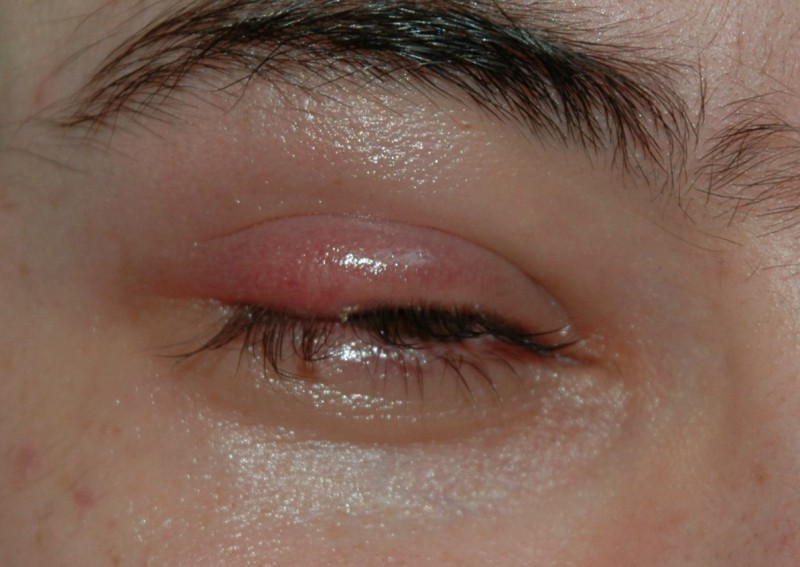
Blepharitis is a common yet often overlooked eye condition that can lead to discomfort and potential complications if left untreated. In this article, we will delve into the warning signs of blepharitis, helping you understand what to watch for and when to seek medical attention. Your eye health is essential, so let's explore the symptoms, causes, and preventive measures related to blepharitis.
Your eyes are not only the windows to your soul but also crucial indicators of your overall health. While most of us prioritize regular eye examinations, we often tend to ignore certain discomforts that might indicate an underlying issue. One such concern is blepharitis, a condition that affects the eyelids and can lead to various complications if not addressed promptly.
What is Blepharitis?
Blepharitis is an inflammation of the eyelids, specifically at the base of the eyelashes. It can occur due to several factors, including bacterial infections, eyelash mites, or dysfunction of the meibomian glands, which are responsible for producing the oily layer of tears.
Common Symptoms
Redness and Irritation
One of the initial signs of blepharitis is redness and irritation of the eyelids. You might notice your eyelids becoming redder than usual, accompanied by a persistent feeling of discomfort.
Itchy Sensation
An uncontrollable urge to rub your eyes is a classic symptom of blepharitis. The itchiness can range from mild to severe, leading to potential complications if not managed.
Crusty Eyelids
If you wake up with crusty or sticky eyelids, it could be indicative of blepharitis. The inflammation can cause the eyelids to stick together, especially after a night's sleep.
Watery Eyes
Paradoxically, blepharitis can lead to both dry eyes and excessive tearing. Your eyes might water excessively as a response to the irritation.
Potential Causes
Bacterial Infection
Blepharitis often occurs due to the presence of bacteria on the eyelids. These bacteria can thrive in the base of the eyelashes, leading to inflammation and discomfort.
Eyelash Mites
Yes, you read that right—tiny mites called Demodex can take up residence in your eyelash follicles, contributing to blepharitis. These mites can cause significant irritation.
Meibomian Gland Dysfunction
The meibomian glands play a crucial role in tear production. Dysfunction of these glands can lead to an imbalance in tear composition and the development of blepharitis.
Who is at Risk?
Blepharitis doesn't discriminate and can affect people of all ages. However, those with a history of oily skin, dandruff, rosacea, or certain autoimmune conditions are more susceptible.
Diagnosing Blepharitis
If you suspect you have blepharitis, it's essential to consult an eye specialist for a proper diagnosis. The diagnosis typically involves a clinical examination of your eyelids and may include an eyelid swab to determine the presence of bacteria or mites.
Treatment Options
Warm Compresses and Lid Hygiene
Mild cases of blepharitis can often be managed with warm compresses and proper eyelid hygiene. Regularly cleaning the eyelids and applying warm compresses can help alleviate symptoms.
Medications
In some cases, your doctor may prescribe medications to control inflammation and manage bacterial growth. These may include antibiotic ointments or steroid eye drops.
Antibiotic Ointments
Topical antibiotic ointments can be applied to the eyelids to reduce bacterial overgrowth and inflammation. These ointments need to be used as directed by your healthcare provider.
Prevention Tips
Regular Eyelid Hygiene
Maintaining proper eyelid hygiene is crucial in preventing blepharitis. Clean your eyelids daily with a gentle cleanser recommended by your eye specialist.
Makeup Practices
If you wear makeup, ensure you remove it entirely before sleeping. Makeup residue can contribute to the development of blepharitis, so it's essential to keep your eyelids clean.
When to Consult a Doctor
Persistent Symptoms
If you experience persistent redness, itching, or discomfort in your eyelids, it's time to seek medical attention. Ignoring these symptoms could lead to worsening of the condition.
Changes in Vision
Blepharitis can sometimes affect your vision, causing blurred or distorted sight. If you notice any changes in your eyesight, consult a doctor promptly.
Severe Discomfort
Intense pain, sensitivity to light, or a feeling of a foreign object in your eye requires immediate medical evaluation. These could be signs of a more severe condition related to blepharitis.
Blepharitis might not be a household name, but it's a condition that deserves your attention. By recognizing the warning signs and taking preventive measures, you can protect your eye health and ensure a clear and comfortable vision.
The Opinions of Health Experts: How Much Calabash Is Right for You?
Exploring the Advantages and Drawbacks of Carbonated Water: Sparkling vs. Still
Expert Advice, Potential Health Risks, and More on Chia Seeds